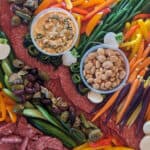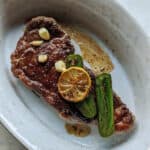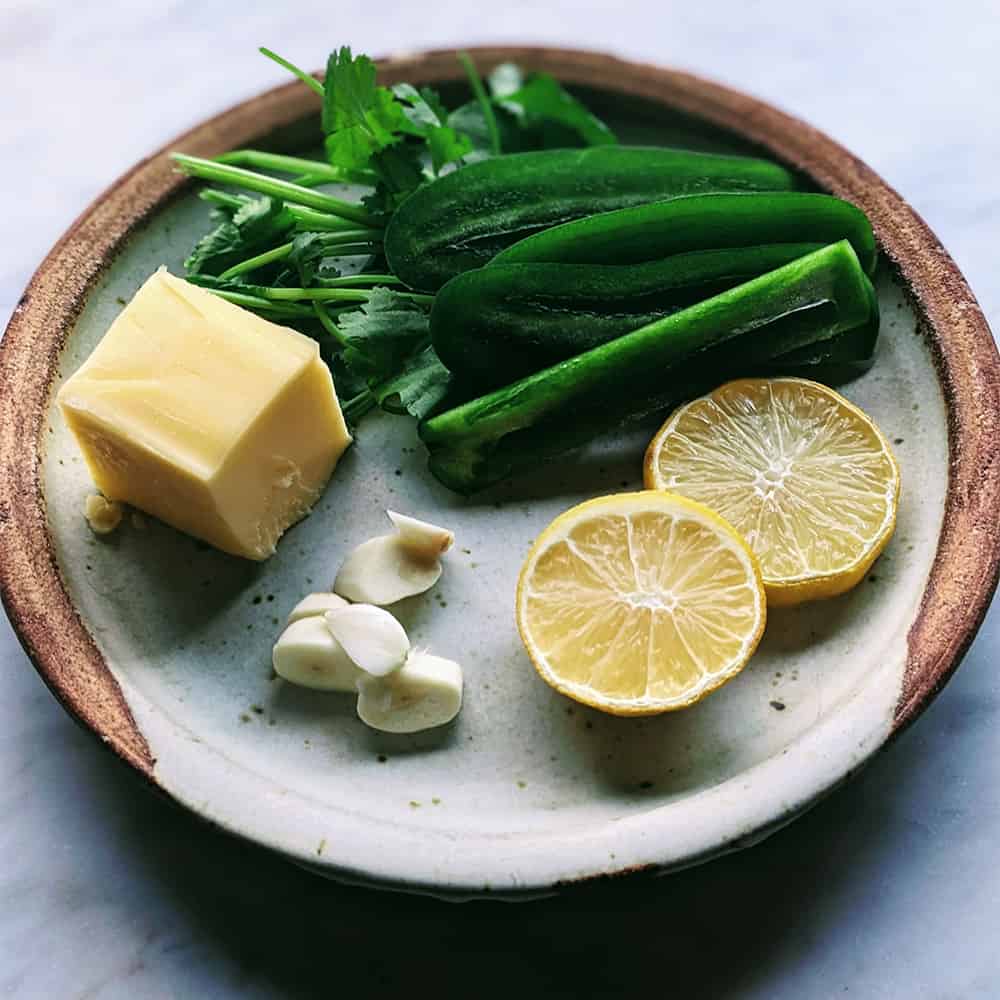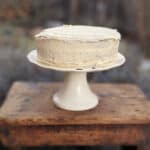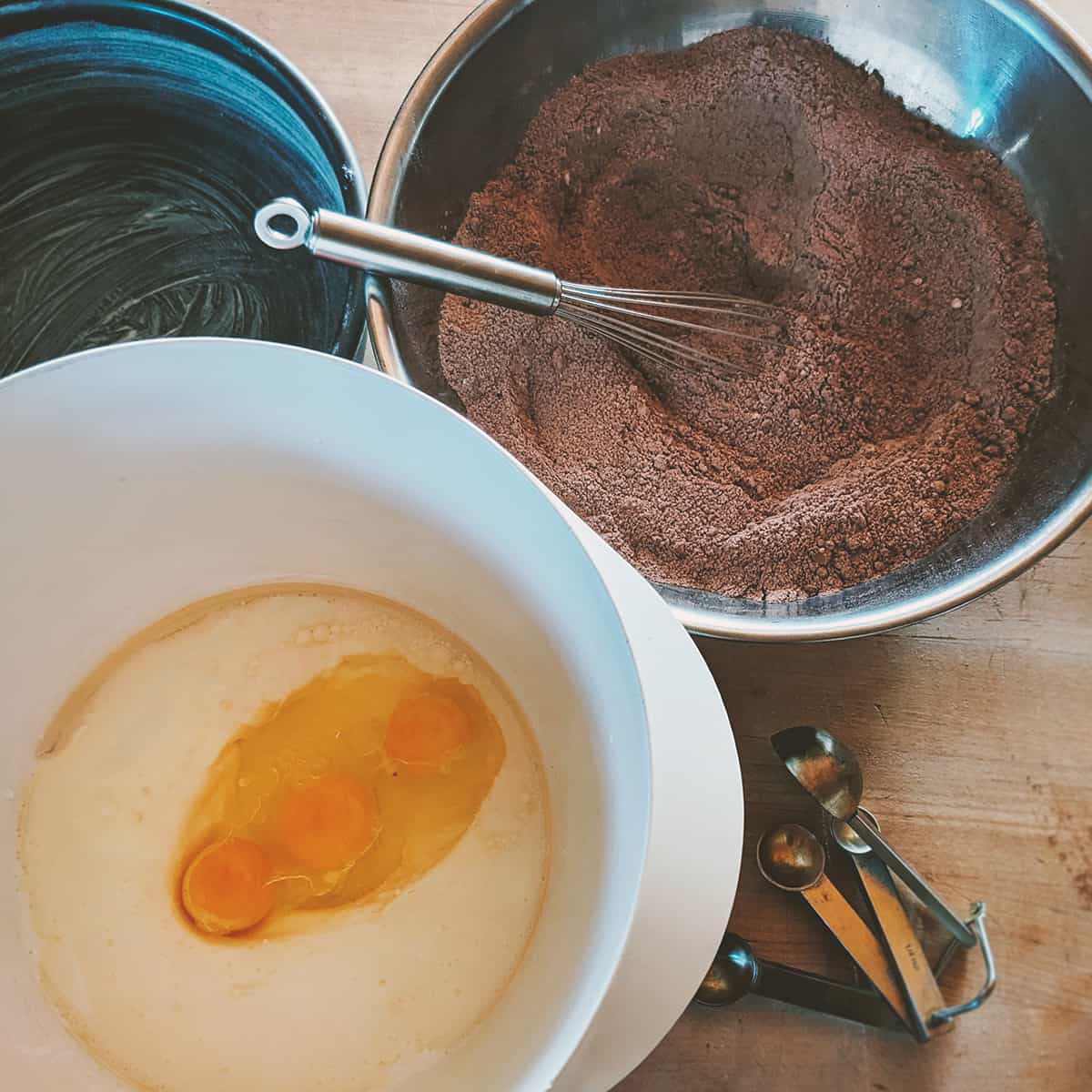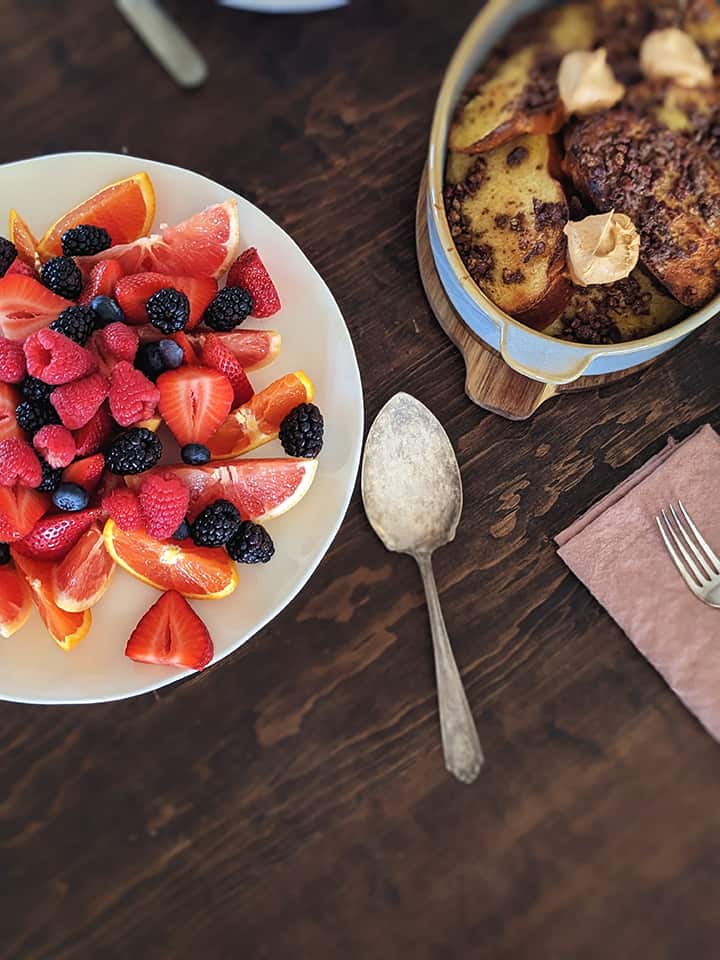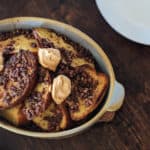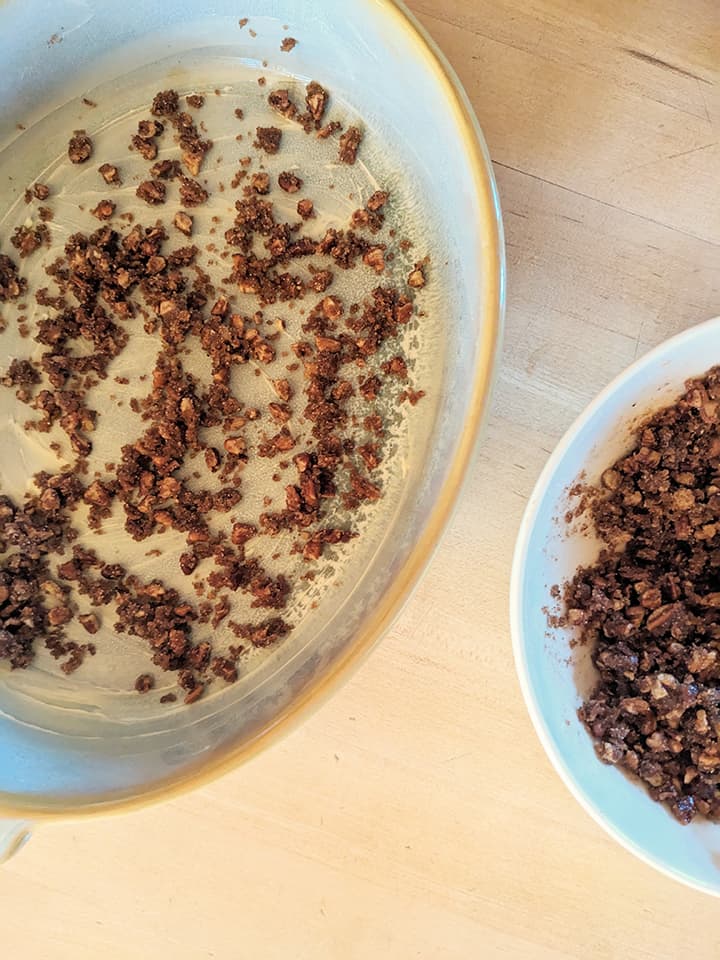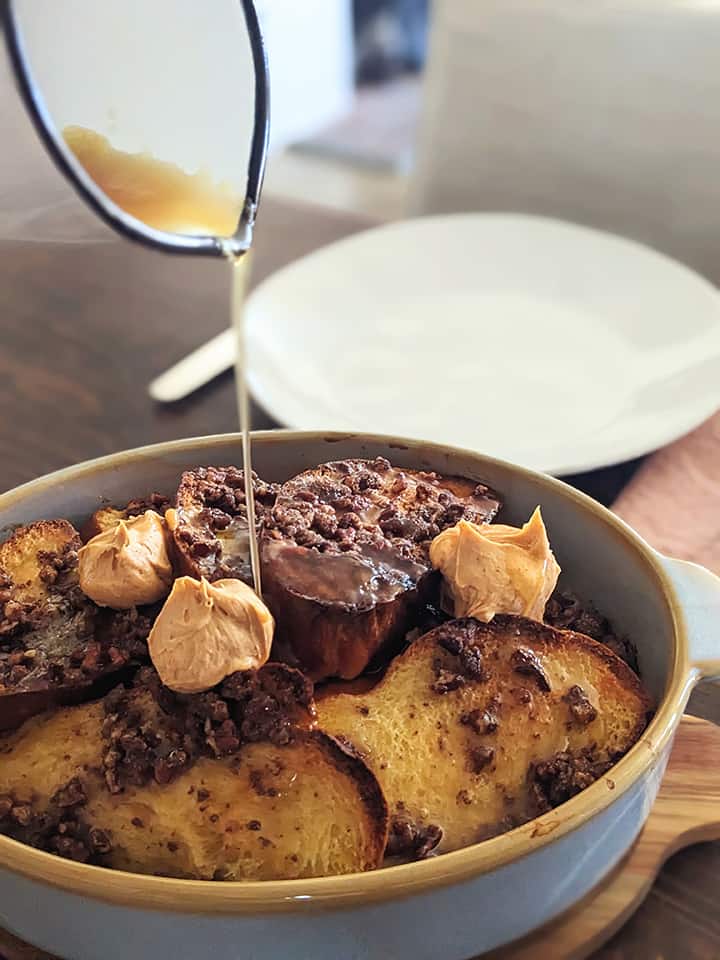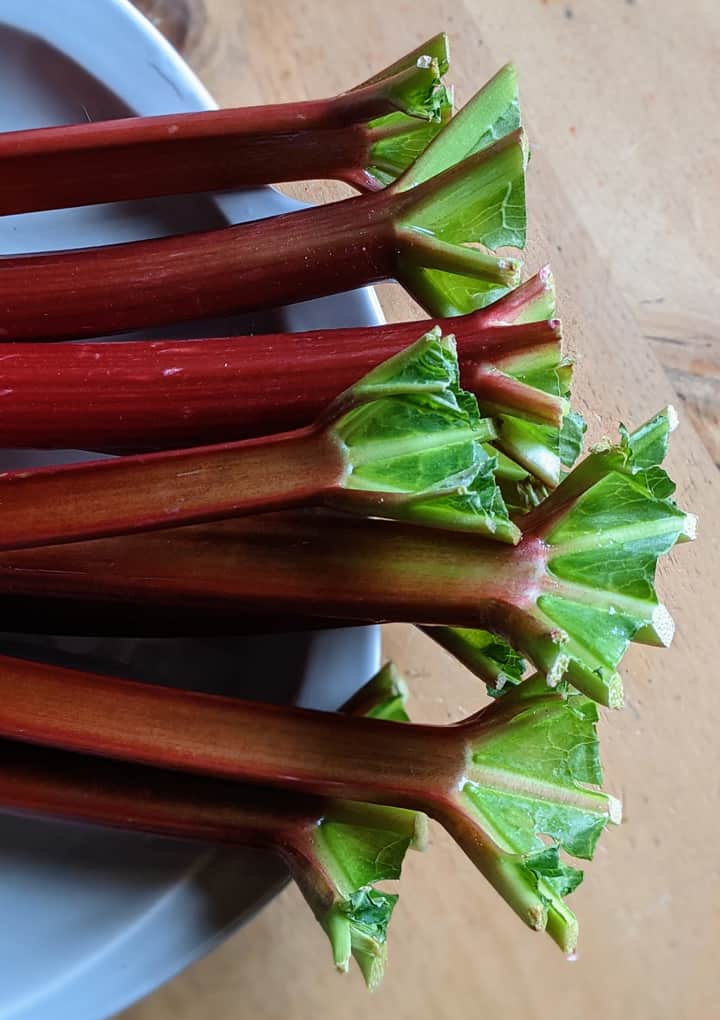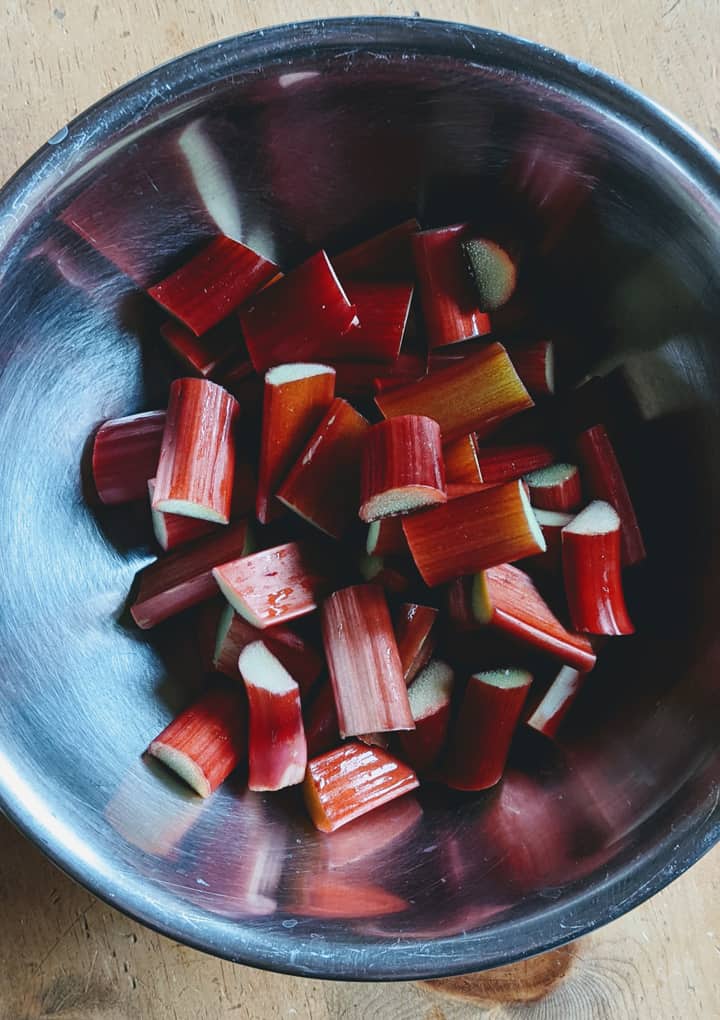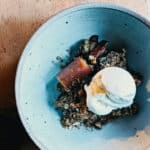In the last few weeks, I have found myself at birthday parties, block parties, and picnics at the park. So this week I wanted to make a homemade dip/spread that would be perfect for crackers, sandwiches, crusty bread, charcuterie, and all the vegetables you can think of. This creamy, red-chile spiked caramelized onion dip is even good with apples, and yesterday, I found myself smearing some on a piece of hot smoked salmon.
Caramelizing the onions
The secret to a good homemade caramelized onion dip is all about the onions. After around fifteen minutes of cooking, the onions will change to a light caramel color. It’s only natural that one would think you have reached your cooking destination and turn off the heat. But let me assure you, there is far more caramelized traveling to be had. There are many shades of caramelized onions, just like there are many shades of butter turning brown and all of them mean various degrees of (heavenly) depth of flavor. As your onions continue to turn deeper shades of brown (at the lowest heat your stove will allow), you’ll also notice they lose more water and take up less space in the pot. Until, at last, you have a small amount of deeply caramelized onions packed with sweet and savory flavor.
The next step is adding High Desert Herbs or Herbes de Provence, some red chile, sour cream, and a brick of softened cream cheese. You’ll notice the recipe calls for a specific order for mixing everything together. This is so you don’t have any little lumps of cream cheese suspended in the dip, which isn’t too big of a deal since it doesn’t affect the flavor, but does alter the final texture and appearance.
If you have a number of get-togethers coming up, if I were you I’d double or triple the batch (since caramelizing onions takes a bit of time) and freeze pints of the finished dip. The day before you need some dip, pull one out of the freezer and the next day you’ll be ready to roll.
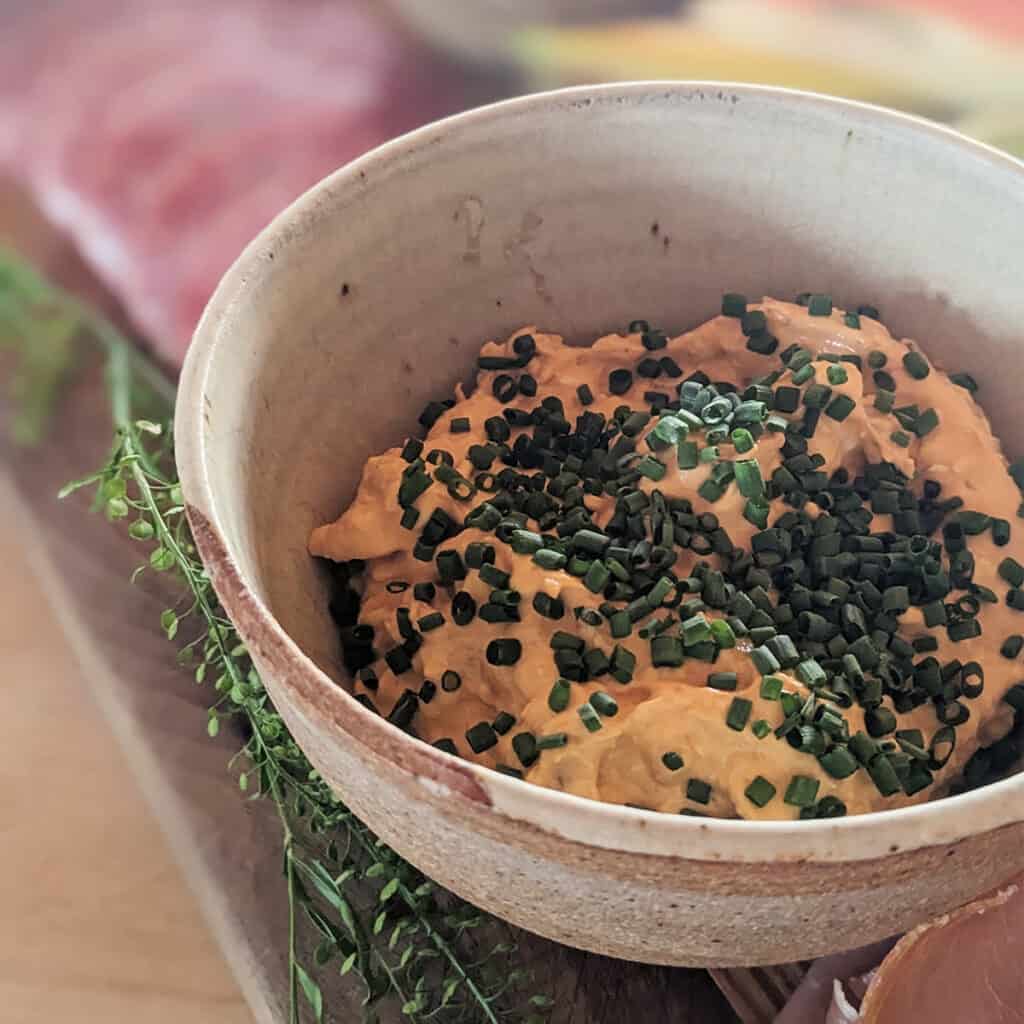
Red Chile Caramelized Onion Dip
This creamy, red-chile caramelized onion dip is perfect for crackers, sandwiches, crusty bread, charcuterie, and all the vegetables you can think of. Made with New Mexico Red Chiles, this appetizer is perfect for any party, picnic, or southwest gathering.
- Prep Time: 25
- Cook Time: 35
- Total Time: 1 hour
- Yield: 1 pint
- Category: appetizer
- Method: Caramelize
- Cuisine: New Mexican
Ingredients
- 2 T. butter
- 1 large yellow onion, sliced
- 2 t. High Desert Herbs or Herbes de Provence
- 2 garlic cloves, thinly sliced
- 1/4 c. Mild New Mexico Red Chile puree
- 1 1/2 c. Sour cream
- 1 brick (8 oz) cream cheese, room temperature
- salt and pepper, to taste
- minced chives, for garnishing
Instructions
In a heavy-bottomed pot over medium-low heat, melt the butter. Add the onions, cover, and cook for around fifteen minutes. This allows the onions to steam and release a large portion of their water fairly quickly. While they are steaming, stir them every few minutes.
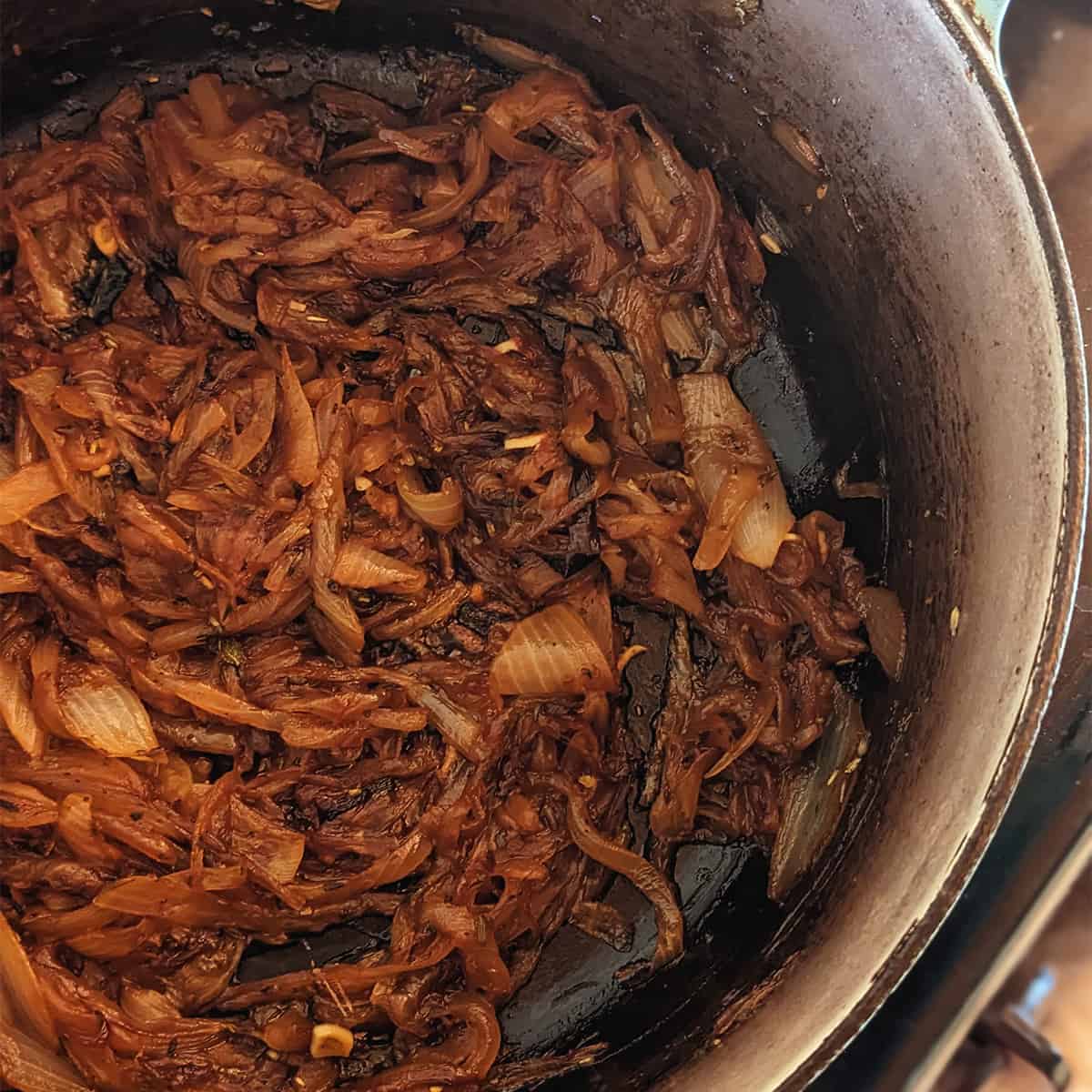
Uncover the onions and at this point, they will probably begin to look caramelized. Uncover them, stir, add the dried herbs, and turn the heat to low (as low as it can go). Let them continue to slowly caramelize for around 30 minutes, stirring every five minutes or so. Add the garlic and cook for another five minutes, stirring frequently.
Turn off the heat and deglaze with the red chile puree, scraping the bottom of the pan with a wooden spoon. Carefully transfer this mixture to a blender or food processor and buzz just a few times and let it come to room temperature.
Once the onions are cooled to room temperature, add the cream cheese to the bowl of a stand mixer with a paddle attachment and whisk for about a minute until it’s light and airy. Add the sour cream and mix again. Now add the onion mixture and mix until everything is distributed. Check seasoning and add salt and/or pepper as needed. Transfer to a bowl and garnish with chives.

